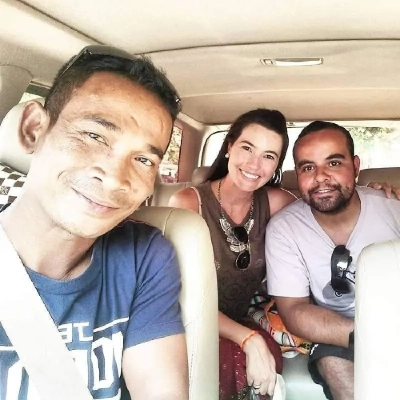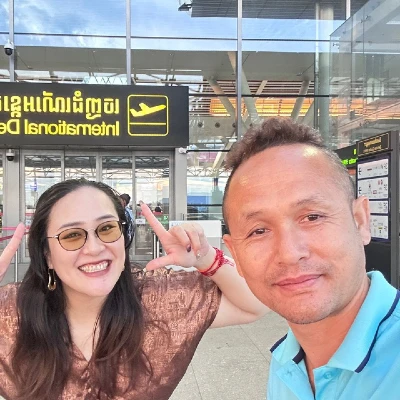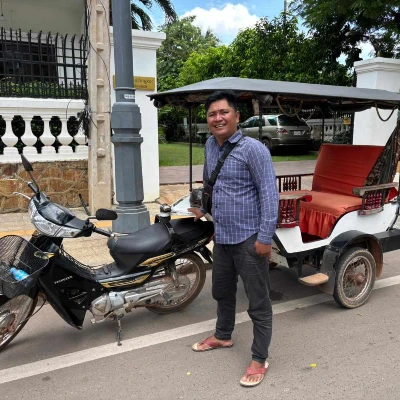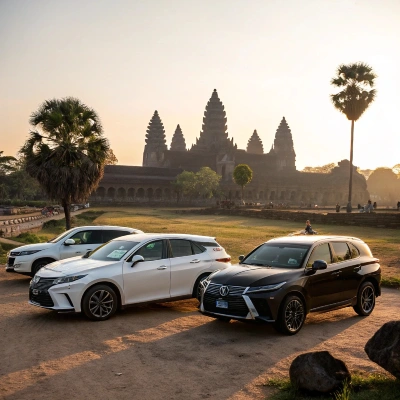
Overview of Angkor famous temples
Visiting Angkor Wat’s temples can feel overwhelming—with so many structures, which sites truly capture its essence and offer unforgettable sunrise or sunset moments? This guide highlights must-see temples, from Angkor Wat’s iconic sunrise vistas to Ta Prohm’s jungle-clad ruins at twilight, blending history, architecture, and practical tips to help you explore Cambodia’s Khmer wonders with confidence.
Angkor Wat: The Crown Jewel of Khmer Architecture
Angkor Wat stands as the world’s largest religious monument and Cambodia’s iconic symbol. Its grandeur reflects centuries of cultural pride, drawing millions to its sacred grounds where history and spirituality converge in harmonious symmetry.
Constructed in the 12th century by King Suryavarman II, Angkor Wat began as a Hindu temple dedicated to Vishnu. This architectural marvel required decades of labor, merging artistic vision with spiritual symbolism across its sprawling 162.6-hectare expanse.
Below are essential facts about Angkor Wat :
| Category | Details |
|---|---|
| Name | Angkor Vat (Angkor Wat) |
| Location | Near Siem Reap, Cambodia |
| Type | Hindu-Buddhist Temple Complex |
| Builder | King Suryavarman II |
| Construction Century | 12th Century |
| Original Dedication | Hindu God Vishnu |
| Religious Transition | Buddhism (late 12th century) |
| Area | 162.6 hectares |
| Orientation | West-facing |
| Architectural Features | Moats (5 km perimeter), Rectangular Galleries, Quincunx Towers |
| Symbolism | Represents Mount Meru (Hindu/Buddhist cosmology) |
| UNESCO Status | World Heritage Site (ID 668-001) |
Angkor Wat’s design mirrors Mount Meru, Hindu-Buddhist sacred mountain. Moats symbolize cosmic oceans, galleries reflect mountain ranges, while five central towers represent Meru’s peaks. This layout creates a physical journey toward spiritual enlightenment.
Originally Hindu, Angkor Wat transitioned to Buddhism in the late 12th century. Sculptures of Buddha appeared alongside Vishnu depictions, reflecting the region’s shifting religious landscape while preserving its architectural and cultural heritage through the centuries.
Angkor Wat’s bas-reliefs stretch 520 meters, illustrating Hindu epics and Khmer history. The Mahabharata’s Kurukshetra battle, Ramayana’s Lanka war, and Suryavarman II’s royal procession reveal storytelling mastery etched in stone.
For optimal visits, arrive early morning or late afternoon to witness Angkor Wat’s golden-hour glow. These periods offer both crowd avoidance and stunning light effects during sunrise and sunset photography opportunities.
Angkor Thom: The Magnificent Walled City
Angkor Thom, meaning « Great City » in Khmer, served as the last major capital of the Khmer Empire. Built in the late 12th century by King Jayavarman VII, it spans 9 km² near Siem Reap, reflecting the empire’s architectural and urban planning mastery.
The South Gate stands as Angkor Thom’s most iconic entrance. Its 12th-century causeway crosses 100-meter-wide moats, flanked by 54 stone giants on each side pulling a serpent. Three-headed elephants flank the gate, symbolizing royal power and religious harmony.
King Jayavarman VII constructed Angkor Thom after repelling Cham invaders in 1177. This late 12th-century city replaced the ransacked Yasodharapura. Its fortified walls and symbolic layout marked a new era of centralized Buddhist governance and architectural innovation across Southeast Asia.
Angkor Thom contains several key structures that showcase its historical and architectural significance:
- Bayon Temple known for its serene stone faces representing Avalokiteshvara
- South Gate featuring iconic four-faced towers and elephant statues
- Phimeanakas ancient three-tiered pyramid serving as a royal temple
- Terrace of the Elephants 400-meter-long ceremonial platform with elephant carvings
- Terrace of the Leper King mysterious sandstone terrace with cryptic carvings
- Royal Palace complex that once housed Jayavarman VII’s court
The Terrace of the Elephants, a 350-meter-long platform, hosted royal ceremonies and military parades. Carved elephants symbolized strength, while its 2.5-meter height provided a grand stage for processions. This structure exemplifies Khmer engineering prowess and ceremonial grandeur.
The Terrace of the Leper King derives its name from a statue displaying leprosy-like features. This 12th-century sandstone structure includes a hidden corridor with intricate carvings. Its cryptic details and weathered figures continue to intrigue historians and visitors exploring Angkor Thom’s lesser-known marvels.
Bayon Temple: The Temple of Faces
Bayon Temple anchors Angkor Thom as its spiritual heart. Constructed in the late 12th or early 13th century by King Jayavarman VII, its 37 remaining towers bear 173 serene stone faces. This Buddhist monument symbolizes compassion and royal legacy within Cambodia’s temple complex.
Built during King Jayavarman VII’s reign, Bayon’s 54 original towers held 216 smiling faces. These carvings blend Buddhist Avalokiteshvara imagery with royal representation. The 37 surviving towers still radiate the Khmer Empire’s artistic mastery, inviting endless interpretations of their symbolic expressions.
Bayon’s bas-reliefs depict Khmer daily life and historic battles. Scenes include the Great Tonlé Sap naval conflict, market exchanges, and childbirth. These carvings, spanning 10,000 figures, offer rare insights into 12th-century Southeast Asian society beyond religious iconography.
Originally a Mahayana Buddhist temple, Bayon evolved with Jayavarman VII’s spiritual vision. Hindu elements remain in its layout, but Buddhist symbolism dominates. The faces’ ambiguous serenity reflects the king’s effort to unify his realm through compassionate imagery and architectural innovation.
Mid to late afternoon offers ideal lighting for photographing Bayon’s faces. Golden sunlight accentuates facial details while minimizing shadows. Early morning or late afternoon visits also reduce crowds, allowing photographers to capture the temple’s enigmatic atmosphere without interference from other visitors.
Explore Bayon’s three levels to discover its best-preserved faces. The upper tiers reveal intricate facial details. Enter through the less-crowded east gate for quieter exploration. The temple’s layout challenges visitors to navigate narrow corridors and uneven surfaces while tracing the king’s spiritual legacy through stone.
Ta Prohm: Where Nature Embraces Ancient Stones
Ta Prohm, known as the « Tomb Raider Temple, » merges stone ruins with colossal trees. This 12th-century Buddhist monastery captivates visitors with its jungle-choked galleries, where roots twist around sandstone, creating a timeless dialogue between nature and architecture.
Built by King Jayavarman VII around 1186, Ta Prohm served as a Buddhist monastery and learning center. Originally named Rajavihara, it housed over 12,500 people. Its design honored Prajnaparamita, symbolizing the king’s spiritual devotion and administrative complexity in Angkor’s temple network.
Massive strangler figs and silk-cotton trees dominate Ta Prohm’s landscape. Their roots crack stone walls, merging temple and forest. This organic grip creates dramatic visuals but accelerates structural decay, making conservation a delicate balance between preservation and natural evolution across its 60-hectare expanse.
Lara Croft’s 2001 cinematic debut at Ta Prohm boosted its global fame. The film’s jungle-enshrouded scenes drew crowds seeking cinematic nostalgia. Today, it remains one of Angkor’s most visited sites, blending archaeological wonder with pop culture allure near Siem Reap.
Conservationists stabilize Ta Prohm’s ecosystem without removing its iconic trees. Experts monitor root damage while preserving the temple’s wild aesthetic. Limited interventions since the 1990s prioritize structural safety over invasive restoration, maintaining its « discovery » atmosphere post-abandonment.
Capture Ta Prohm’s photogenic trees early morning or late afternoon. The iconic « Tomb Raider tree » and eastern galleries offer prime shots. Visit weekdays to avoid peak crowds. Combine with nearby Banteay Kdei for a quieter exploration of Angkor’s forested temples.
Phnom Bakheng: The Premier Sunset Viewpoint
Phnom Bakheng, built in the late 9th century by King Yasovarman I, is among Angkor’s oldest temples. Its elevated position and sunset vistas make it a highlight of temple circuits. As the former state temple, it combines ancient Khmer architecture with breathtaking natural scenery.
Constructed as Yasovarman I’s state temple around 907 AD, Phnom Bakheng predates Angkor Wat by over two centuries. This Hindu monument, dedicated to Shiva, marks the site of Yasodharapura, the city that preceded Angkor Thom. Its historical precedence shapes its cultural and religious significance.
Phnom Bakheng’s design mirrors Mount Meru’s cosmic symbolism. Five terraces represent mountain tiers, with 108 surrounding towers symbolizing lunar cycles. The central sanctuary’s five peaks align with Hindu cosmology, creating a sacred landscape that bridges earthly and divine realms through its geometric precision.
Visitors ascending Phnom Bakheng’s 65-meter hill witness Angkor Wat’s silhouette at sunset. The elevated viewpoint reveals rice fields, moats, and temple spires merging into a golden panorama. This vantage point remains one of the most photographed scenes in Cambodia’s archaeological park.
For optimal sunset viewing, arrive 90 minutes before twilight. The 300-person limit at the summit requires early arrival, especially during peak season. Sunset’s brief spectacle—where sunlight aligns perfectly with Angkor Wat’s central tower—demands patience but rewards with unforgettable visuals.
World Monuments Fund collaborates with Cambodian authorities to preserve Phnom Bakheng’s structure. Visitor caps and restricted access to fragile areas balance preservation with tourism. These measures ensure the temple’s survival as both a heritage site and a living witness to Southeast Asia’s architectural evolution.
Banteay Kdei: The Peaceful Buddhist Monastery
Banteay Kdei, known as the « Citadel of Monks’ Cells, » is a serene Buddhist monastery built by King Jayavarman VII. Located east of Angkor Thom, its compact layout and tranquil atmosphere provide a quieter alternative to Angkor’s busier temples.
Constructed between the late 12th and early 13th centuries, Banteay Kdei served as a Buddhist monastic center. This temple housed monks and scholars, reflecting Jayavarman VII’s religious vision while maintaining architectural continuity with other Khmer sites in Cambodia’s archaeological park.
Banteay Kdei shares Ta Prohm’s Bayon style but occupies a smaller footprint. Its concentric galleries and central tower mirror Khmer design principles. The temple’s proximity to Srah Srang reservoir enhances its meditative ambiance compared to larger, more visited complexes.
The Hall of Dancers features devata and apsara carvings along its columns. These celestial figures, meticulously sculpted in sandstone, symbolize spiritual harmony and artistic sophistication. Their detailed expressions distinguish Banteay Kdei’s decorative program from other Angkor temples.
Restoration balances preservation with structural stability at Banteay Kdei. Authorities prioritize minimal intervention to retain its weathered aesthetic. Efforts focus on preventing further decay while ensuring visitor safety among the temple’s ancient corridors and crumbling stone elements.
Angkor Wat’s grandeur, Angkor Thom’s historical depth, and Phnom Bakheng’s sunset vistas offer a journey through Cambodia’s soul. Plan your visit early to witness temples aglow at dawn or dusk, and explore beyond the iconic to discover hidden gems. Each stone whispers stories—let Angkor’s timeless beauty leave an indelible mark on your travels.
FAQs About the Tours
Any question ?
What are the best temples to see ?
Angkor offers a wealth of temples, but some stand out. Angkor Wat is the most famous, a stunning example of Khmer architecture that transitioned from Hindu to Buddhist use. Bayon Temple, located in Angkor Thom, is known for its massive stone faces. Ta Prohm is famed for the trees intertwining with its stone structures.
Other notable temples include Phnom Bakheng, offering panoramic sunset views, and Banteay Srei, admired for its intricate pink sandstone carvings. Beng Mealea, partially engulfed by the jungle, offers an adventurous exploration experience, while Preah Khan features sunlit corridors and columns.
Is 2 days enough for Angkor Wat ?
Two days can be sufficient to see the main sites of Angkor, allowing you to visit iconic temples like Angkor Wat, Angkor Thom, and Ta Prohm. However, this can feel rushed, especially given the heat and crowds. A longer visit, such as four days, provides a more relaxed experience.
With two days, you can follow the small circuit to see the major temples. For a more enriching experience, consider hiring a guide to learn about the Khmer history and symbolism, and use a tuk-tuk to navigate the archaeological park. A longer stay allows for exploring more distant temples and avoiding peak hours.
03
Is Angkor Wat a wonder of the world ?
Angkor Wat is widely considered a wonder of the world due to its beauty and immense size. As the largest religious monument globally, it showcases stunning Khmer architecture. Originally built as a Hindu temple dedicated to Vishnu, it later transformed into a Buddhist temple, reflecting Cambodia’s cultural and spiritual heritage.
The temple’s design, symbolizing Mount Meru, and its intricate bas-reliefs contribute to its grandeur. Angkor Wat is a symbol of Cambodia, featured on its national flag, and a major tourist attraction recognized as a UNESCO World Heritage site.
What is the oldest temple in Angkor ?
Preah Ko is the oldest surviving temple in the Angkor region, constructed in 879 by King Indravarman I. Located in the Roluos group, it predates Angkor Wat by over 200 years. The name « Preah Ko » means « the sacred bull, » referring to the statues of Nandi, the guardian of the Hindu god Shiva.
The temple consists of six brick towers adorned with intricate carvings. During its construction, Hinduism was the dominant religion, with Vishnu and Shiva being the most revered deities. Preah Ko offers a more peaceful, less crowded experience compared to Angkor Wat.
Expert Team

Kim Hak
MiniVan Driver
Hello Dear Valued Visitor !
My name is Kim Hak, and I’m a local Cambodian driver specializing in tourist services in Siem Reap, Cambodia. I drive a Grand Starex and offer taxi services and tours to all 25 provinces and cities (24-hour service available).
I am an experienced driver who has been driving since 2006, and I can speak English and Mandarin.
I love providing recommendations for interesting places in Siem Reap and showing my customers the best parts of Cambodia. I will ensure that my customers are well taken care of, safe, and have the best travel experience while visiting Siem Reap, Cambodia.
I look forward to showing you around Siem Reap, Cambodia! =)

Sophara
Car Driver
Greetings, travelers! I’m Sophara, your friendly local guide and driver based in Siem Reap, Cambodia. With my comfortable SUV and Grand Starex vehicles, I’m ready to take you on unforgettable journeys throughout Cambodia’s 25 provinces and cities, any time of day or night.
Since 2008, I’ve been passionate about sharing the wonders of my beautiful country with visitors from around the world. Speaking both English and Mandarin, I bridge cultures while creating meaningful travel experiences.
I specialize in creating customized adventures that reveal both Cambodia’s famous landmarks and its best-kept secrets.. Your safety, comfort, and satisfaction are always my top priorities.
Ready to explore Cambodia with a local who truly cares about making your trip extraordinary? Let’s create amazing memories together!

Mister Ra
Tuk-Tuk Driver
Hello there ! I’m Mister Ra, your local tuk-tuk driver and guide in Siem Reap, Cambodia. With my reliable tuk-tuk, I specialize in exploring the magnificent Angkor Wat temple complex and providing comprehensive city tours around Siem Reap.
For nearly two decades, I’ve been showing visitors the incredible temples of Angkor and the vibrant streets of our beautiful city. Speaking English fluently, I enjoy sharing stories and connecting with travelers from all corners of the world
Ready to explore Siem Reap’s treasures with a local who’s passionate about sharing his hometown? Let’s create some amazing memories together !

Chom
Tuk-Tuk Driver
Greetings, fellow travelers !
I’m Chom, your friendlyTuk-Tuk Driver here in Siem Reap, Cambodia.
With my reliable Tk-Tuk, I’ve been serving visitors since 2016, offering transportation and tours throughout Angkor Wat and beyond
Your comfort, security, and satisfaction are my personal mission. Every trip is designed to exceed expectations while respecting your time and budget.

More CARS, More TUKTUK
if needed
Don’t worry we will have many other solutions when we will be fully-booked
We have many friends or relatives to call when needed
Only professional people of course